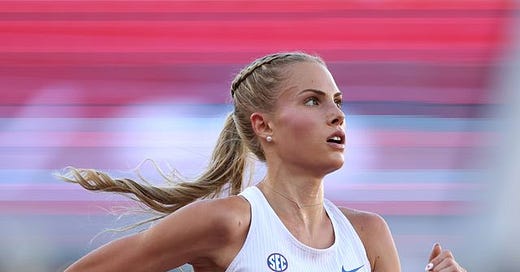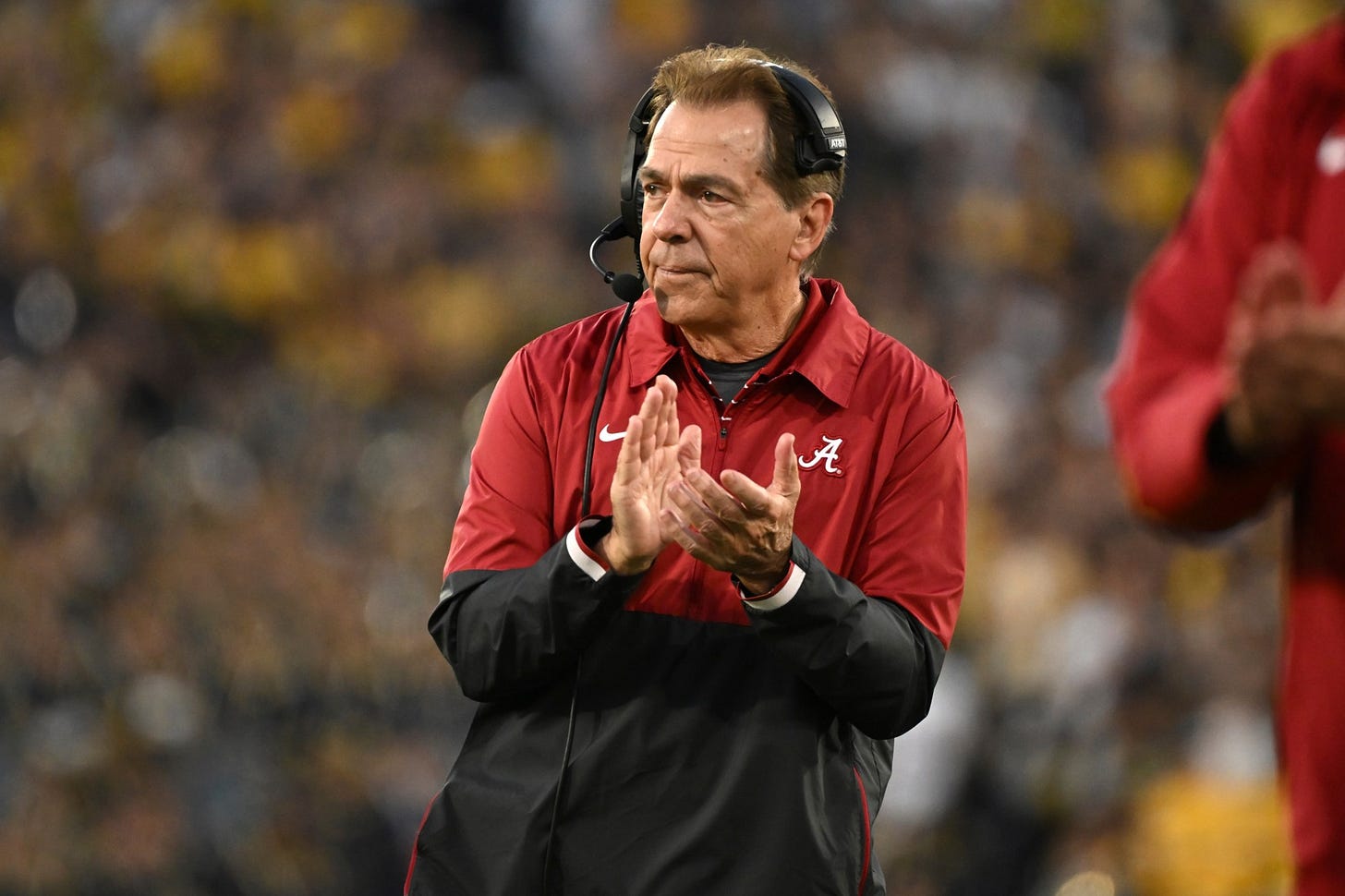With CFB and CBB's Growing Transfer Dilemma, Can Schools Use Contractual Language to Retain Their Homegrown Talent?
During the U.S. Olympic Trials last week, Parker Valby - a six-time NCAA champion and recent graduate of the University of Florida - was seen racing in her Florida running kit even though she already turned pro. This was due, in part, to language within her Nike NIL deal that gives Nike the right to match offers from any other brands for her pro deal. “Right of first refusal” clauses, as they are referred to, have become very common in NIL deals for distance runners. But they are not popular in NIL deals for other sports such as College Basketball and College Football… and I do not believe they will become popular anytime soon. However, I believe strong language that keeps athletes with their particular schools (as opposed to particular brands) for an additional year or two WILL become popular in the near future.
There have been monumental changes across the NCAA over the past few months. Most notably with the NCAA’s proposed settlement in the House v. NCAA case. The House settlement, if approved, would prohibit scholarship caps, enable roster limits for specific sports, and, most importantly, introduce a revenue sharing system where schools could directly pay athletes through a portion of their revenue stream. This would be on top of any deals an athlete could make through their name, image, and likeness. In addition to changes associated with the House settlement, the NCAA recently abolished all transfer restrictions on student athletes.
The world of college sports has seen dramatic changes since the introduction of name, image and likeness. For starters, more and more athletes are entering the transfer portal each year. This year in college football broke a record for the amount of players in the FBS transfer portal. The 3,843 names in the FBS transfer portal smashed the previous record of 3,502 set in the 2022-23 cycle. And these numbers will only continue to rise. Without transfer restrictions and even more money available to college athletes, athletes SHOULD be entering the transfer portal. Even if they have no intention of leaving their respective schools. Athletes are now, essentially, free agents each year. If they have an opportunity to make more money from another school they should consider it. Or at least use it as leverage to get more money from their current schools.
While recent developments will have a tremendously positive impact on college athletes, it may not have the same effects on college sports programs. With unlimited transfers, and money’s rising influence on where athletes play, roster construction and coaching, in general, is becoming more and more difficult. And as a result, these changes played a key role in the retirements of Villanova Basketball’s Jay Wright and Alabama Football’s Nick Saban - two of college sports most decorated head coaches. In discussing his retirement, Nick Saban said that “the goals and aspirations are just different…it's all about how much money [someone] can make as a college player.” "Our program [Alabama] was always built on how much value can we create for your future and your personal development, academic success in graduating and developing an NFL career on the field.”
As Saban pointed out, the importance of development for players as an athlete (and as an individual) will be outweighed by the importance of money. Not only from the player’s perspective, but from the school’s perspectives as well. In college football, for example, many athletes coming out of high school are not ready to compete at the college level. It could take a year or two of strength & conditioning, and learning & developing, before an athlete is ready and able to contribute to their team. From the school’s perspective, why pay a player to develop when you can just pay an older transfer that is more mature and ready to help right away. In addition, what if after a year or two of developing, a player decides to leave. What incentive is there to pay and develop a young player if there is a good chance they are going to leave early in their collegiate career?
While these are major concerns that schools certainly have, they may be able to alleviate some of these concerns through contracts they offer to college athletes. With the introduction of revenue sharing, schools could deal with their athletes directly. This means that they can offer contracts with language that could entice players to stay within their program for multiple years. For example, schools could offer players two-three year contracts. Or as I mentioned earlier, a school could include a “right of first refusal” clause that allows a school to match any offer made by another school. Or, they could have incentives that, if a player meets specific milestones, automatically raise their potential pay for the following year. These are just a few examples of what a school could do. Without any sort of collective bargaining agreement to govern these contracts, there is a lot of options schools may have to incentivize players to stay in their program.
While agents will not want their players to give up some of their “free agent” control, I think college athletes would be open to it. For many athletes, they grew up rooting and cheering for certain schools with the dream to one day play for them. Would it really be an issue to have to then stay at their dream school for an extra year or two?
With all these new changes coming to college sports, schools are going to have to figure out the best way for their individual programs to compete. While some programs will surely look to talent from from other schools via the transfer portal, I expect others to try and compete through the development of their own talent. One way they could try and retain this talent is through the structure and language of their athletes’ contracts.








